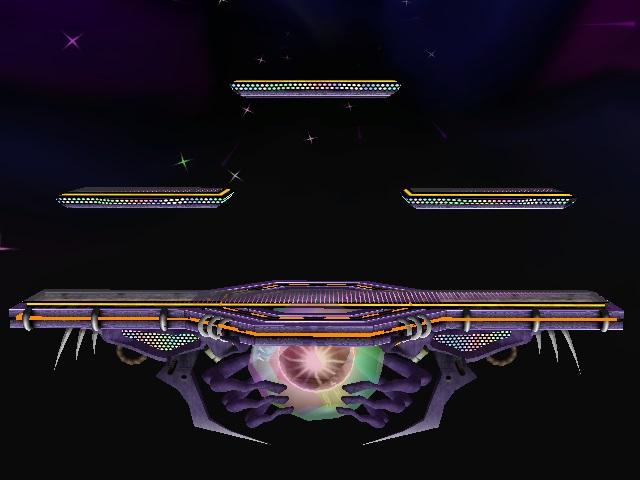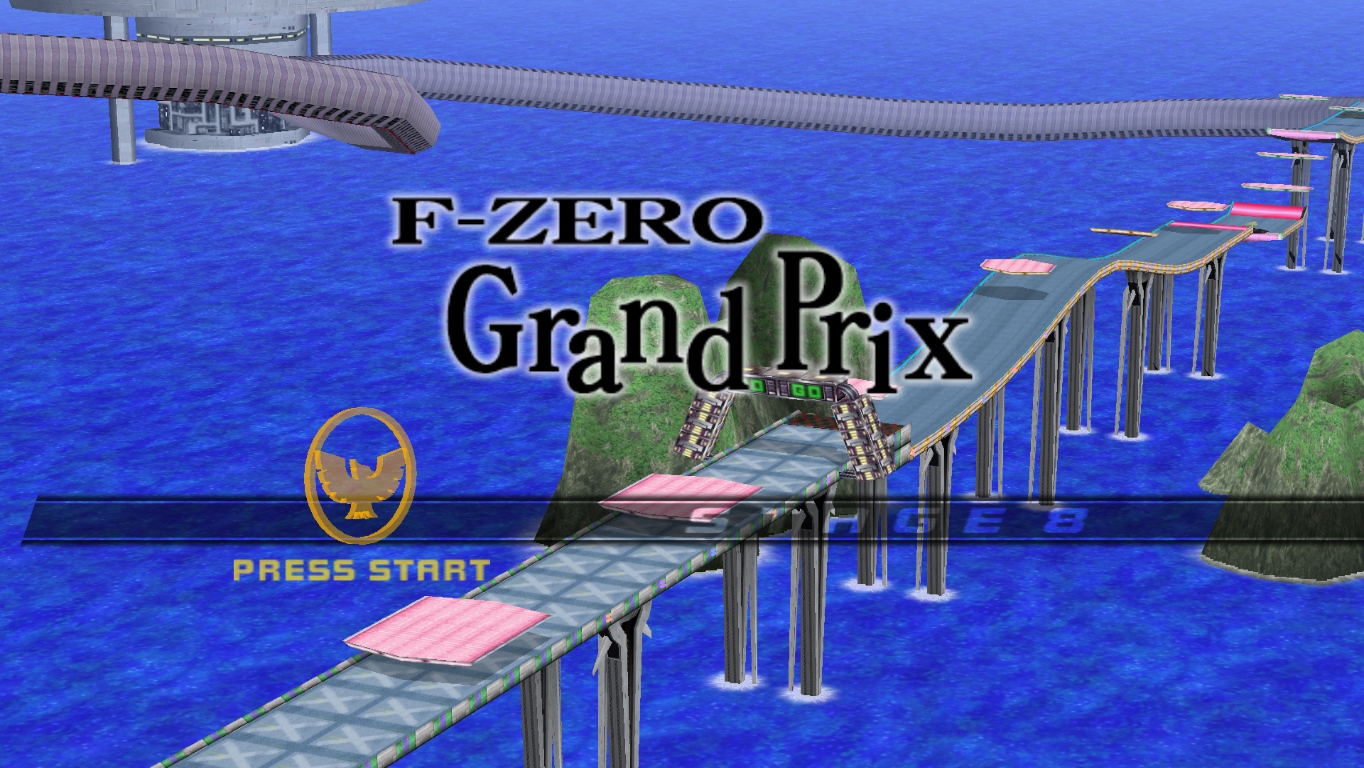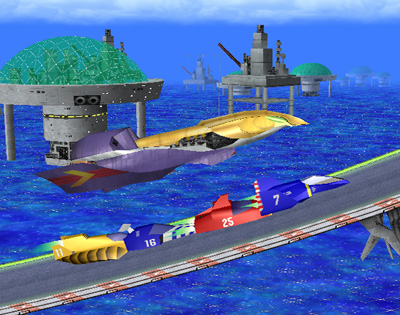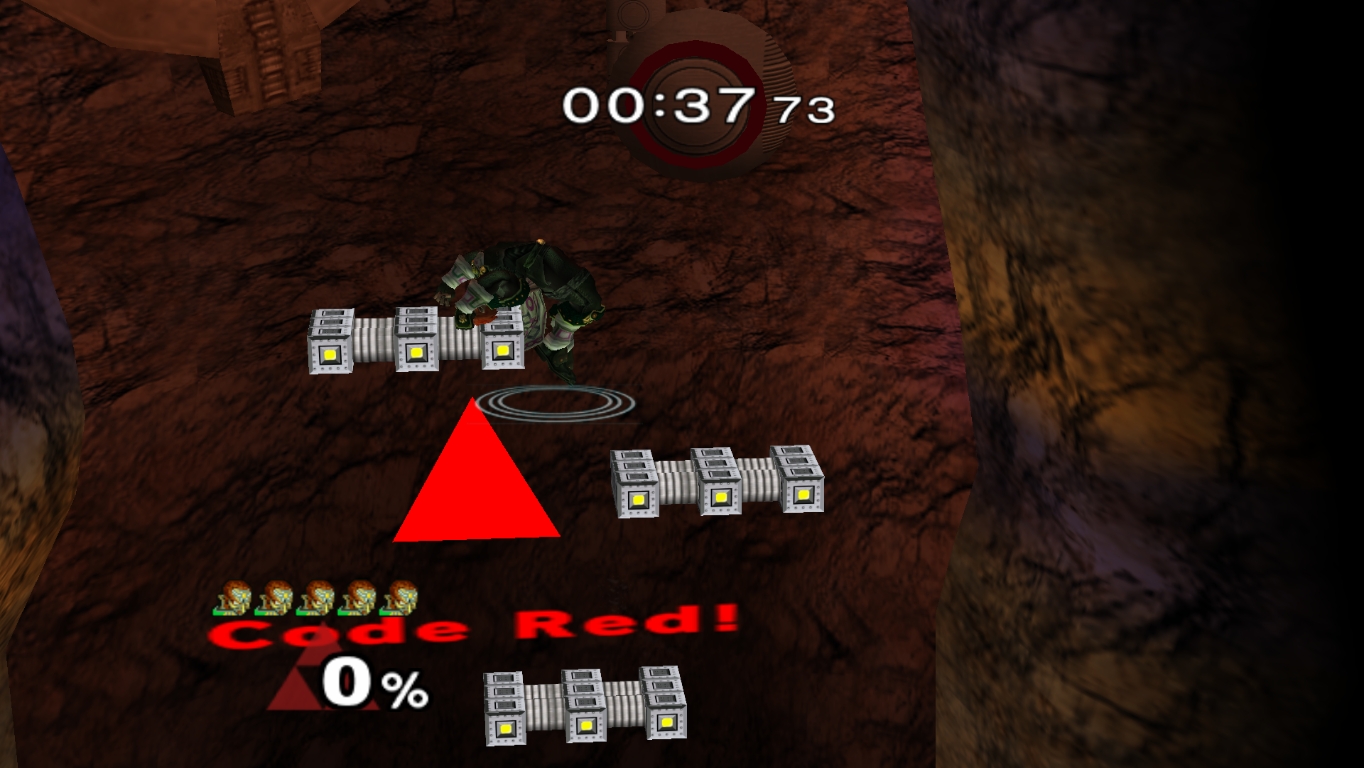Eisen
Smash Ace
Hey there, I'm Android (not Armada's brother), aka Eisen, and I don't hit the Melee forum up too much since I kinda missed my chance for that competitive scene, but I've had this question I've wanted to ask the community for awhile now and it's bothering me that I haven't yet, so... here goes.
"What defines Melee's art style?"
It's a question I've subconsciously tried to ask myself numerous times over the years but have failed to answer 100%. Not only do I have personal interest and time investment into the question, but as an artist I'd like to hear some outside opinions and potentially get a fresh way of thinking to help answer this question more fully. Aside from the personal interest, I'm also attempting to make a story/universe where the art style is influenced by Melee in subtle ways -- but I'm not sure in which ways to do them? This universe will blend not only Melee aesthetics, but elements from some of my biggest visual art inspirations like Metroid, Xenoblade, Mother, DBZ, Cave Story, Cowboy Bebop, Titanfal, F-Zero, Avatar (both the James Cameron movie and the show lmao), Chrono Trigger, Bravely Default/Final Fantasy, Fire Emblem, Homestuck, Star Trek, Halo, and a bunch of less significant sources I should probably stop bothering to list. u_u
To me, I've always found something profound and unique about, well, just about everything in Melee. In particular, Adventure mode and its sub-levels, the menus, and the designs of some of the stages like battlefield have put me in awe. I've kind of been able to break some of that down and express some of those elements into a character, which I will list in a moment... but, there's a problem. As much as I've deconstructed the menus and the obviously quirky things about Melee -- the abstract geometrical patterns, faded objects and lines blending with cool nebulous backgrounds -- there's still something that sets Melee apart from most other games. At least, to me in my own head. It's some kind of cinematic aesthetic that I've only encounter in Melee itself and one other game: Kirby Air Ride. Let me show you what I mean:
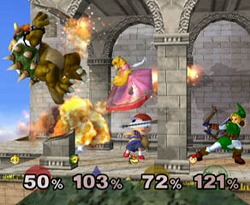
Ah, yes, Temple... A level we're all familiar with from our dawning Melee days... but something is unique about this picture. What is it?
I can't really put my finger on it. Something unique about the lighting, the color choices... It's a very amazing, special blend of color and contrast. But... there's more than that, isn't there?

Here's a quick google image search for a temple. Similar construction, right? But... It doesn't immediately remind you of "Melee", does it? What's different? What has been tweaked to give Melee's interpretation a much more distinctive feel? This is the question I struggle to answer still, and the question that I challenge the Melee community, artist or not, to help me answer.
Melee is very near and dear to my heart, and I want to create something that will breathe its style into a new generation, maybe, because I fear that if I don't, it will go unrecognized for a long time.
Anyway, here's some screens I feel are relevant to the "style" I want to represent, just to give you guys a reference. Anything you can point out will be helpful. Examine everything -- it's not just the characters and stages I'm worried about, but backgrounds, menus, text, HUDs, everything. Help me define what makes Melee "Melee".
Also, I have to wonder if anyone else has attempted anything like this? Please, fellow artists, do chime in if this even remotely interests you! Have you seen styles like this elsewhere? Even if you're not an artist and just wanna say, "hey, I know what you mean! I feel that, too!" Please share if any of this applies to you, and thanks for any constructive feedback. If this thread picks up any, I might use this as a compilation/masterpost of inspiration for other artists.
"What defines Melee's art style?"
It's a question I've subconsciously tried to ask myself numerous times over the years but have failed to answer 100%. Not only do I have personal interest and time investment into the question, but as an artist I'd like to hear some outside opinions and potentially get a fresh way of thinking to help answer this question more fully. Aside from the personal interest, I'm also attempting to make a story/universe where the art style is influenced by Melee in subtle ways -- but I'm not sure in which ways to do them? This universe will blend not only Melee aesthetics, but elements from some of my biggest visual art inspirations like Metroid, Xenoblade, Mother, DBZ, Cave Story, Cowboy Bebop, Titanfal, F-Zero, Avatar (both the James Cameron movie and the show lmao), Chrono Trigger, Bravely Default/Final Fantasy, Fire Emblem, Homestuck, Star Trek, Halo, and a bunch of less significant sources I should probably stop bothering to list. u_u
To me, I've always found something profound and unique about, well, just about everything in Melee. In particular, Adventure mode and its sub-levels, the menus, and the designs of some of the stages like battlefield have put me in awe. I've kind of been able to break some of that down and express some of those elements into a character, which I will list in a moment... but, there's a problem. As much as I've deconstructed the menus and the obviously quirky things about Melee -- the abstract geometrical patterns, faded objects and lines blending with cool nebulous backgrounds -- there's still something that sets Melee apart from most other games. At least, to me in my own head. It's some kind of cinematic aesthetic that I've only encounter in Melee itself and one other game: Kirby Air Ride. Let me show you what I mean:

Ah, yes, Temple... A level we're all familiar with from our dawning Melee days... but something is unique about this picture. What is it?
I can't really put my finger on it. Something unique about the lighting, the color choices... It's a very amazing, special blend of color and contrast. But... there's more than that, isn't there?

Here's a quick google image search for a temple. Similar construction, right? But... It doesn't immediately remind you of "Melee", does it? What's different? What has been tweaked to give Melee's interpretation a much more distinctive feel? This is the question I struggle to answer still, and the question that I challenge the Melee community, artist or not, to help me answer.
Melee is very near and dear to my heart, and I want to create something that will breathe its style into a new generation, maybe, because I fear that if I don't, it will go unrecognized for a long time.
Anyway, here's some screens I feel are relevant to the "style" I want to represent, just to give you guys a reference. Anything you can point out will be helpful. Examine everything -- it's not just the characters and stages I'm worried about, but backgrounds, menus, text, HUDs, everything. Help me define what makes Melee "Melee".
Also, I have to wonder if anyone else has attempted anything like this? Please, fellow artists, do chime in if this even remotely interests you! Have you seen styles like this elsewhere? Even if you're not an artist and just wanna say, "hey, I know what you mean! I feel that, too!" Please share if any of this applies to you, and thanks for any constructive feedback. If this thread picks up any, I might use this as a compilation/masterpost of inspiration for other artists.




